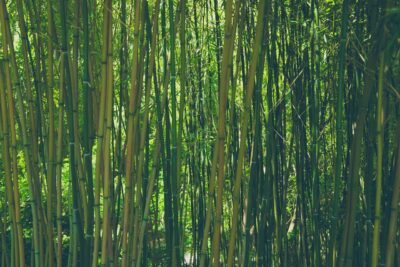Do you want to build a deck or fence that is straight and not warped? Then choosing good wood for your project is the best choice. But what types of wood are rot-resistant and won’t warp? Check out this article for 6 different kinds of hardwood Scranton Deck recommends choosing from!
Walnut – Walnut, also called English walnut, is a heavy wood used for cabinetry work, furniture making, gunstocks, and more. It has dark brown or blackish heartwood with reddish-brown sapwood that’s lighter in color compared to other types of hardwood. Walnut is extremely rot-resistant, decay-resistant, and durable while untreated. But good chemical treatments are required to preserve the wood’s stability and longevity.
Walnut is a great choice for decking or fencing because it is extremely durable, stable, and long-lasting while untreated. But chemical treatments are required to help protect it from decay and maintain its strength over time. Its colors make an attractive deck!
 Bamboo – Bamboo is a grass that grows in tropical and subtropical regions. The thick walls of the bamboo’s hollow stem make it very rot resistant while untreated, but good treatments can help improve its stability and resistance to decay. It also has a low chance of splitting or twisting because of its straight grain and small growth rings that run perpendicular to the direction of the fibers.
Bamboo – Bamboo is a grass that grows in tropical and subtropical regions. The thick walls of the bamboo’s hollow stem make it very rot resistant while untreated, but good treatments can help improve its stability and resistance to decay. It also has a low chance of splitting or twisting because of its straight grain and small growth rings that run perpendicular to the direction of the fibers.
Bamboo is a great choice for decking or fencing because it grows very fast with little to no maintenance, straight grain that limits splitting, and rot resistance when untreated. It also takes color well!
Rosewood – Rosewood has a strong and durable structure while the heartwood of the tree is dark brown in color turning into a light purplish-brown when it oxidizes. The sapwood is light yellow in color while the heartwood’s dark color makes an attractive contrast against the sapwood making it a popular choice for fine furniture, cabinetry work, and more.
Rosewood has great qualities like limited warping, good stability over time, high resistance to rot when untreated, and high durability as a Scranton Deck. It also has good resistance to decay and chemicals as well as little chance of splitting or twisting because of its straight grain pattern!
Hickory – Hickory is a very popular type of hardwood used for making baseball bats, tool handles, cabinets, furniture, and more. When the wood is newly cut it is pale yellow with a reddish tinge, but over time it becomes dark brown to black with the heartwood being more of a chocolate color.
Hickory is extremely rot-resistant, tough, very hard with good dimensional stability over time, and heavy which makes it durable as decking for railings or fence posts. But hickory is difficult to work with making it harder to get straight cuts, planed boards, or sanded surfaces. But one positive is that it can be glued together!
Oak (Red Oak) – Red oak is a type of hardwood only found in North America and Europe. It has pinkish-white sapwood while the heartwood is reddish-brown with paler colored patches. It is straight-grained and has an attractive appearance making it popular for flooring, furniture, cabinetry work, gunstocks, paneling, paneling, shingles, and more.
Red oak has good qualities like the ability to turn red when treated (which makes an incredible-looking Scranton deck!), takes color well, and is rot resistant when untreated. But red oak has poor durability as a floor and can be hard to sand properly leaving smooth surfaces because of the grain pattern. But it also has many other common uses like fences!
Teak – Teak is a tropical tree only found in Asia that grows towards the coast due to its salty taste in the soil. Its wood is a golden brown color when fresh, but it turns to a deep greyish-brown or dark gray when dry. Teak has either straight or wavy grain that makes an attractive deck while its high oil content helps protect it from rot and decay while treating the wood regularly.
